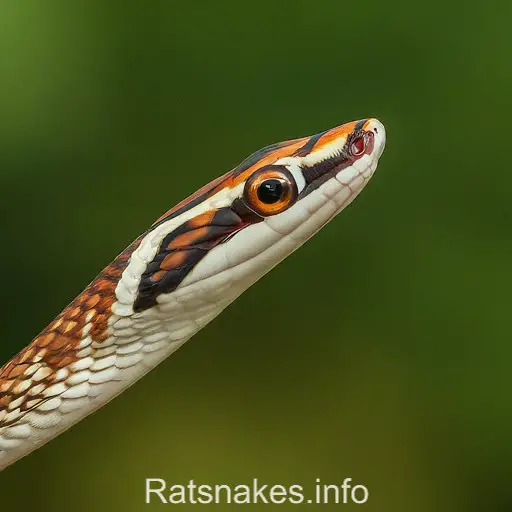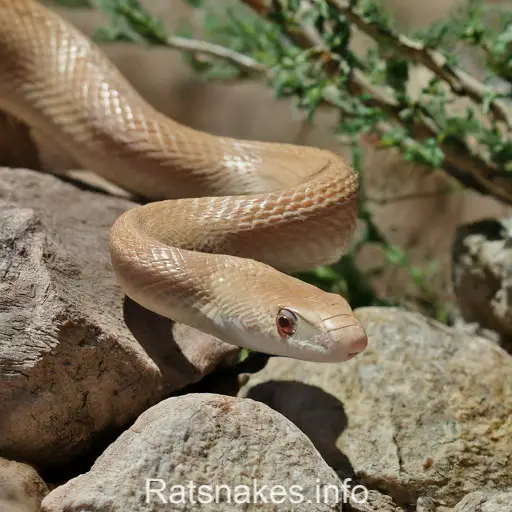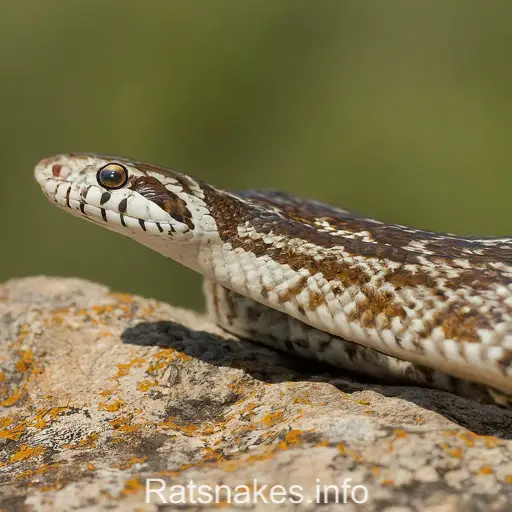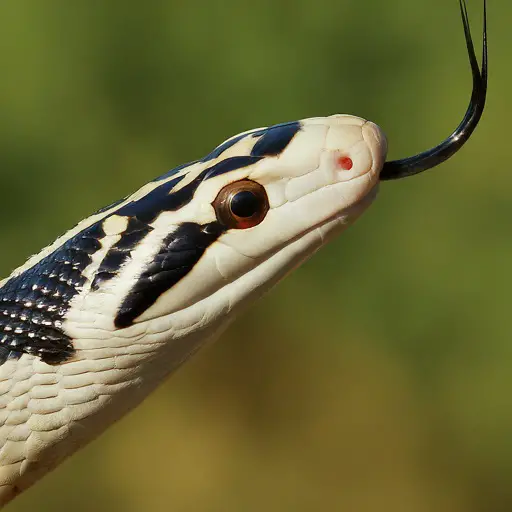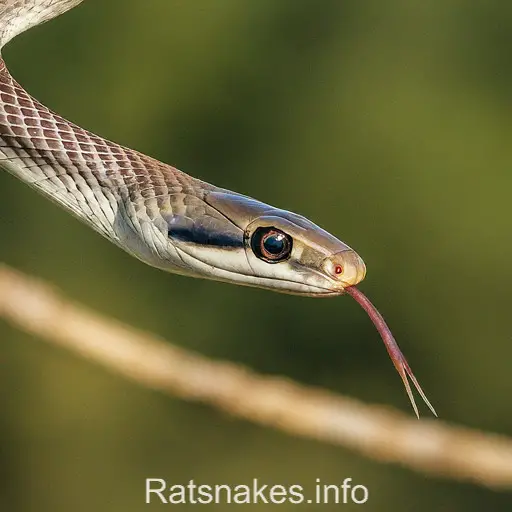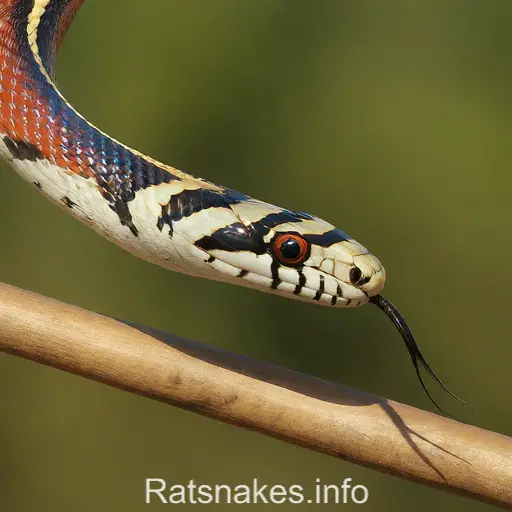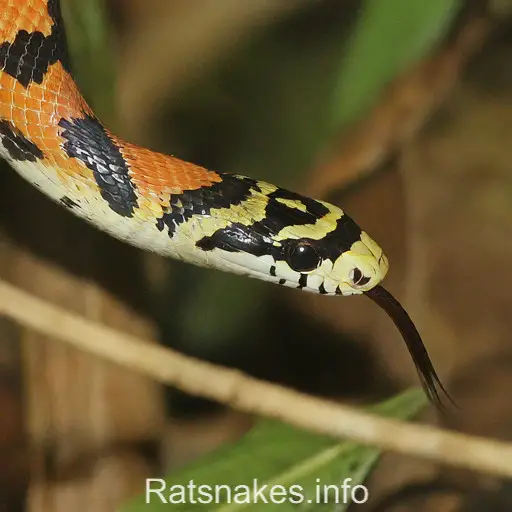
Welcome to our exploration of Spilotes pullatus, a fascinating species that goes by the common name of the “Tiger Rat Snake.” Known for its striking appearance and unique behaviors, this snake species is a sight to behold in the wild. With its vibrant colors and agile movements, the Tiger Rat Snake captivates both seasoned herpetologists and nature enthusiasts alike.
As we delve into the world of Spilotes pullatus, we’ll uncover intriguing facts about its habitat, diet, and distinctive characteristics. From its preferred tropical environments to its hunting strategies, there’s much to learn about this enigmatic serpent. Join us on this journey as we unravel the mysteries surrounding the Tiger Rat Snake and gain a deeper appreciation for the wonders of the natural world.
Habitat of Spilotes pullatus
Spilotes pullatus, also known as the Tiger Rat Snake, is primarily found in tropical forests throughout Central and South America. These snakes thrive in a variety of habitats, including rainforests, savannas, and tropical dry forests. Their adaptable nature allows them to reside in both arboreal (tree-dwelling) and terrestrial (ground-dwelling) environments.
In the wild, you can often spot Spilotes pullatus near bodies of water, such as rivers or streams, as they are skilled swimmers. These serpents are diurnal, meaning they are most active during the day, utilizing the warmth of sunlight to regulate their body temperature and hunt for prey.
Their preferred habitats offer ample opportunities for camouflage and ambush hunting, allowing them to blend seamlessly into their surroundings while patiently waiting for unsuspecting prey to pass by. This unique combination of habitat preferences and hunting strategies make Spilotes pullatus a fascinating species to study in the wild.
By understanding the diverse habitats where the Tiger Rat Snake thrives, we can gain a deeper appreciation for the interconnectedness of various ecosystems and the vital role these snakes play in maintaining the balance of their natural environments.
Diet of the Tiger Rat Snake
When it comes to the Diet of the Tiger Rat Snake, we’re looking at a carnivorous predator that primarily preys on a variety of small mammals and birds in its natural habitat. These agile hunters are known to consume rodents such as mice, rats, and squirrels, as well as bird eggs and nestlings.
One interesting aspect of their diet is the occasional consumption of other reptiles, including lizards and even small snakes. Their ability to adapt their diet based on availability demonstrates their versatility as opportunistic feeders.
The Tiger Rat Snake’s hunting technique typically involves using stealth and ambush strategies to catch its prey. By blending into its surroundings with their remarkable camouflage, they patiently await the perfect moment to strike and capture their unsuspecting meal.
In addition to their primary diet of mammals, birds, and reptiles, these snakes have also been observed consuming amphibians and invertebrates, showcasing their role as important predators in their ecosystem. By maintaining a balanced diet, the Tiger Rat Snake plays a vital role in controlling populations of smaller animals, contributing to the overall biodiversity of its habitat.
Distinctive Characteristics of Spilotes pullatus
When it comes to Spilotes pullatus, there are several distinctive characteristics that set this species apart. Here are some key features that make them stand out:
- Coloration: One of the most striking features of Spilotes pullatus is its vibrant coloration. They typically have a base color of green or olive with bold black markings along the length of their bodies, creating a beautiful contrast that helps them blend into their natural habitat.
- Size: These snakes are known for their impressive size, sometimes reaching lengths of over 6 feet. Their long, slender bodies and agile movements make them formidable predators in their ecosystem.
- Scales: The scales of Spilotes pullatus are smooth and glossy, giving them a sleek and elegant appearance. This physical characteristic, combined with their coloration, makes them visually distinct from other snake species.
- Behavior: Known for their active and curious nature, Spilotes pullatus are agile climbers and are often found basking in the sun or exploring their surroundings. They are also fast-moving predators, using their speed and stealth to capture prey.
- Defense Mechanisms: When threatened, Spilotes pullatus can exhibit defensive behaviors such as hissing loudly, vibrating their tails, and even striking if necessary. These behaviors serve as warning signals to potential predators and help them defend themselves effectively.
The Distinctive Characteristics of Spilotes pullatus contribute to their unique identity in the animal kingdom. Their striking appearance, impressive size, and fascinating behaviors make them a captivating species to study and observe in their natural habitat.
Hunting Strategies of the Tiger Rat Snake
When it comes to hunting, Spilotes pullatus utilizes a combination of stealth, agility, and speed. These snakes are known for their exceptional climbing abilities, allowing them to explore a variety of environments in search of prey. Their agile nature enables them to swiftly maneuver through trees and shrubs, making them highly efficient hunters.
One of the key hunting strategies of the Tiger Rat Snake involves ambushing their prey. They patiently wait for the right moment to strike, using their quick reflexes to catch unsuspecting small mammals, birds, and reptiles. This ambush technique, coupled with their lightning-fast movement, makes them formidable predators in their habitat.
Spilotes pullatus are also skilled constrictors, using their powerful bodies to squeeze and overpower their prey. Once they have captured their target, they coil around it and constrict, leading to a quick and efficient kill. This hunting method not only aids in securing their meal but also helps conserve energy by minimizing struggle.
Another interesting hunting strategy employed by the Tiger Rat Snake is their ability to track down prey using their keen sense of smell. They can detect scent trails left by potential meals, allowing them to follow and locate their next target with precision. This hunting tactic showcases their adaptability and resourcefulness in securing food sources in diverse environments.
The Spilotes pullatus‘s hunting strategies combine agility, stealth, and strength to ensure successful hunts in their natural habitat. These techniques, honed through evolution, make them efficient and successful predators in the animal kingdom, further highlighting their fascinating nature.
Key Takeaways
- Habitat: Spilotes pullatus, the Tiger Rat Snake, thrives in tropical forests, displaying adaptability in both arboreal and terrestrial environments near bodies of water. They are diurnal, utilizing sunlight for warmth and hunting.
- Diet: As carnivorous predators, Tiger Rat Snakes prey on small mammals, birds, reptiles, and even invertebrates, showcasing their versatility as opportunistic feeders and significant role in controlling populations.
- Distinctive Characteristics: Their vibrant coloration, impressive size, sleek scales, active behavior, and defensive mechanisms make Spilotes pullatus visually distinct and fascinating to study in their natural habitat.
- Hunting Strategies: Employing stealth, agility, and speed, Spilotes pullatus ambushes prey, utilizes climbing abilities, constricts targets efficiently, and tracks using a keen sense of smell, demonstrating their effectiveness as formidable predators.
Conclusion
The hunting strategies of the Spilotes pullatus, or Tiger Rat Snake, highlight its remarkable abilities in capturing prey. With agile movements, quick reflexes, and efficient constricting techniques, these snakes demonstrate their prowess as skilled predators. Their keen sense of smell aids in tracking down meals, showcasing their adaptability in various environments. The Tiger Rat Snake’s combination of agility, stealth, and strength makes it a formidable hunter in the animal kingdom.

